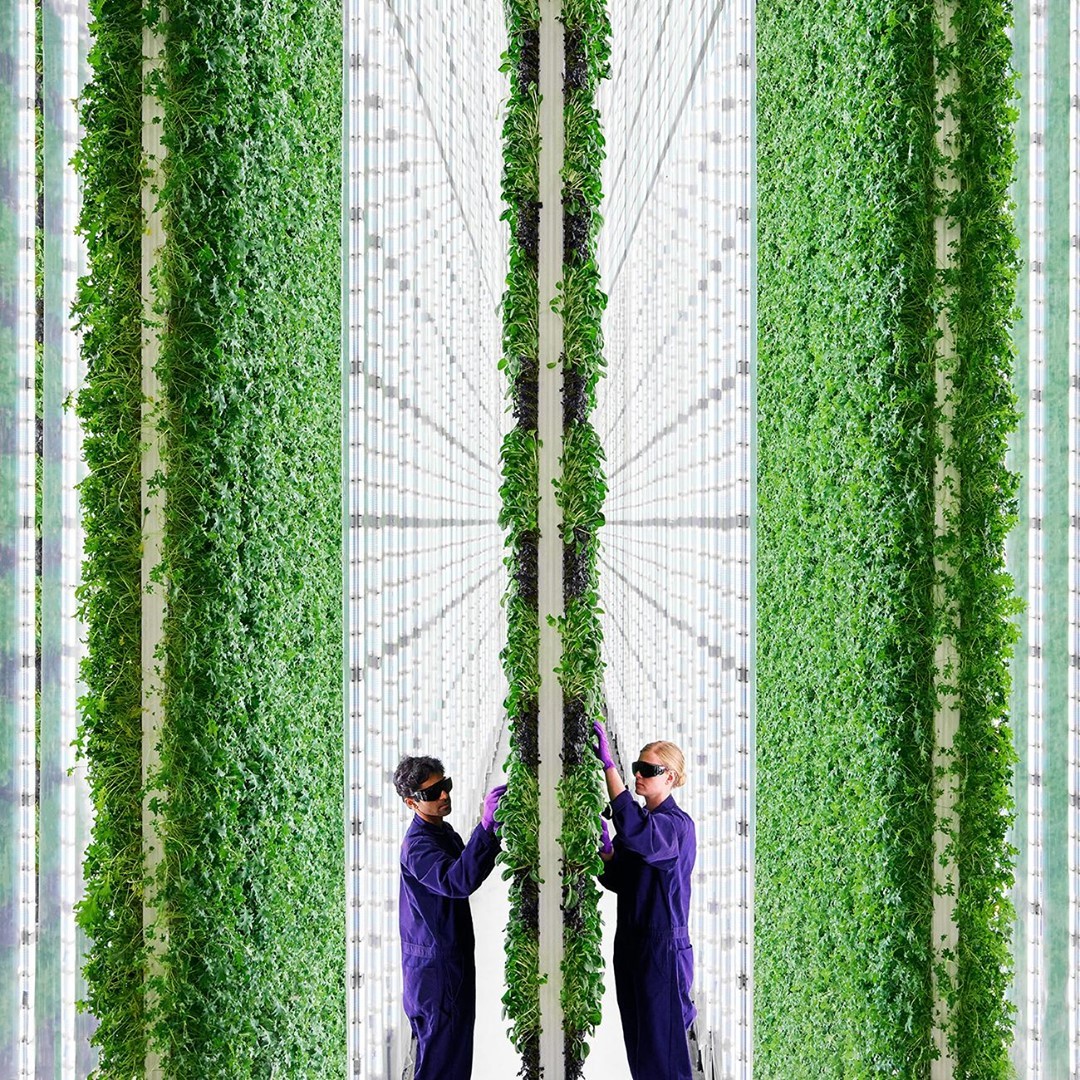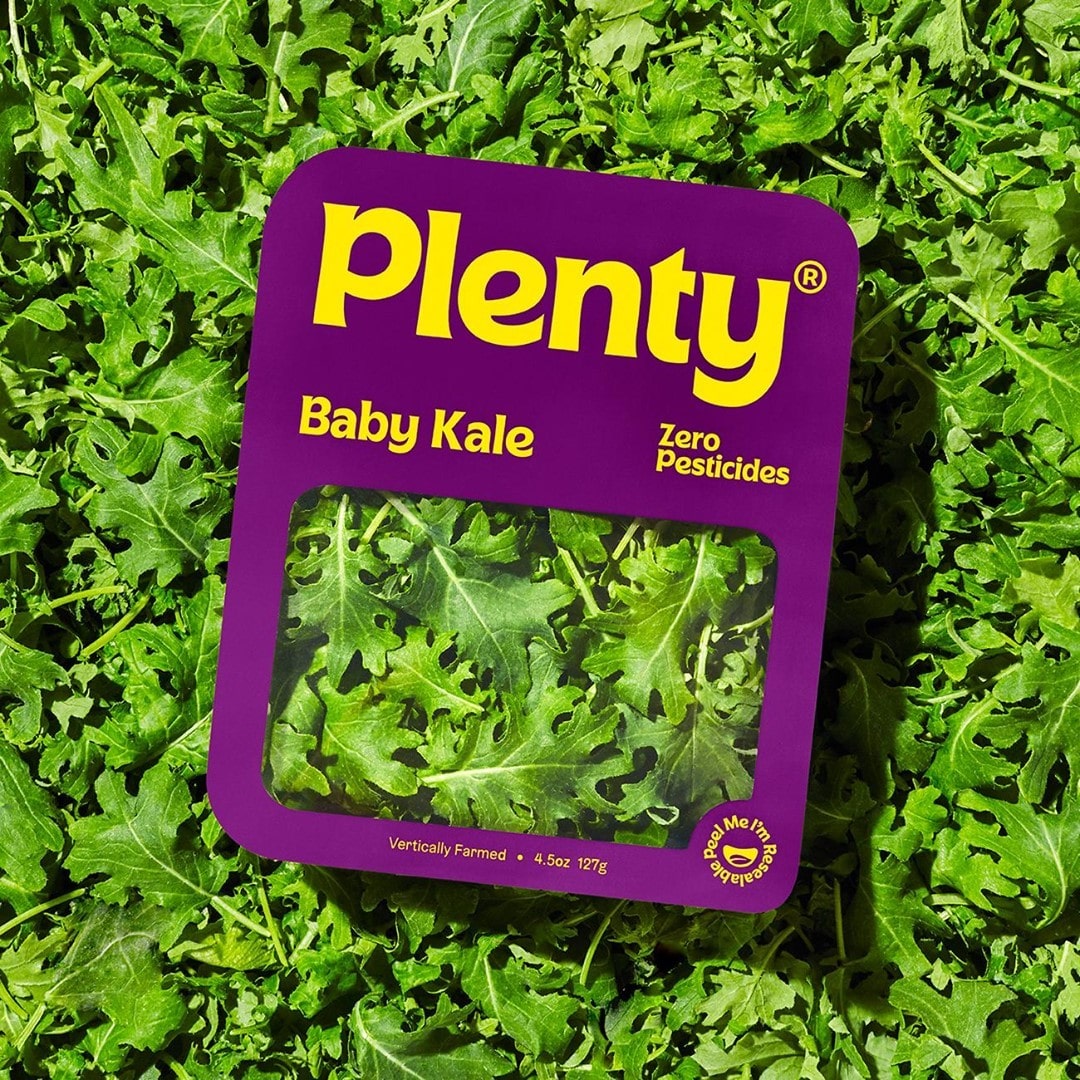Compton, CA, is now officially home to the Plenty Compton Farm—the first and only commercial-scale vertical farm on the West Coast.
The new farm, owned and operated by farming company Plenty, is aiming to supply the southern Los Angeles city with 4.5 million pounds of leafy greens, like baby arugula, baby kale, crispy lettuce, and curly baby spinach per year. All are fresh, pesticide-free, and nutritious, but unlike most greens, they’re grown inside, on two-story-high, 3D-vertical towers. According to Plenty, the new innovative indoor architecture can yield up to 350 times the yield per acre of a conventional farm.
So, does this development—which will see Plenty work with Whole Foods, Walmart, and Singapore Airlines, among others—signal a leap forward for sustainable agriculture? Maybe. And are we all about to start finding more vertically grown greens on the shelves? Quite possibly, but it likely depends on where you live—let’s dive in.
What is vertical farming?
In a nutshell, vertical farming takes the traditional model of flat, open-field farming and tilts it 90 degrees upwards. Doing so means that, instead of rows and rows spanning out into acres of land, plants can be grown in layers on vertical structures in efficient, controlled indoor environments. This means that many vertical farming companies like Plenty can make better use of the space in highly populated major cities.
While it’s the first to open a farm in California, Plenty isn’t alone in the vertical farming industry. Last year, indoor growing company Crop One Holdings teamed up with Emirates to open a 330,000-square-foot farm in Dubai. And back in the US, on the East Coast, Bowery Farming’s vertically grown greens are on the shelves in retailers like Whole Foods and Brooklyn Fare.
Right now, the vertical farming market is worth nearly $590 million, but it’s expected to expand at a compound annual growth rate of more than 20 percent by 2030, reports Grand View Research.
 Plenty/Instagram
Plenty/Instagram
Vertical farming offers a new way to feed busy cities with fresh, local food
The indoor, vertical farming approach is ideal for cities like Compton, which has been dubbed a food desert. This means that access to fresh, locally sourced foods like fruits and vegetables is limited, while processed foods, fast-food chains, and liquor stores are in abundance. And because it’s a busy built-up city, there isn’t a lot of space for conventional, open-field farms.
“The Plenty Compton Farm is bringing field-scale farming back to Compton and introducing a new generation of our community to careers in agriculture—more than 30 percent of the farm’s hires came from Compton,” the city’s mayor Emma Sharif said in a statement. “Plenty’s farm is a model for how we can increase access to fresh, locally grown food for urban populations while supporting cities’ economic development.”
Indoor farming also makes perfect sense in Dubai, which has an expanding population, a lack of arable land, and, like much of the world, a rapidly warming climate. But elsewhere, the most efficient way of producing food might actually involve more traditional methods.
 Plenty/Instagram
Plenty/Instagram
Can vertical farming feed the world?
Companies like Plenty, Crop One, and Bowery Farming are working on a new sustainable, innovative approach to providing the world’s population with fresh, healthy foods. “This is the first step in putting indoor-grown produce on a path to becoming a meaningful part of the global food supply,” Plenty’s CEO Arama Kukutai said regarding the new facility.
The key phrase in this statement is “part of.” Vertical farming isn’t trying to replace conventional agriculture, but rather fill in the gaps where people are struggling to access fresh, locally sourced healthy foods because space and resources are limited.
In many areas of the world, research suggests a more traditional approach actually makes more sense. Last year, a report by the University of Oxford found that in Santiago, Chile, for example, where conditions are suited to grow vegetables, open-field is actually a more efficient system for food production than vertical farming.
This is because for vertical farming to really make sense in terms of sustainability, it must take up fewer resources than other methods. Vertical farming uses far less water than regular methods, but creating the conditions to grow nutritious crops inside undeniably takes an immense amount of electricity. So to be sustainable in terms of land, vertical farms need to be supported by renewable, low-carbon energy sources.
“To properly consider the sustainability and footprint of each farming method, the space needed to capture renewable energy must be added to the overall land footprint,” said study author Till Weidner.
So, the bottom line is, vertical farming is unlikely to feed the world. But in many places where the conditions are unfavorable for conventional farming methods, this additional, innovative way of growing food is undoubtedly set to make a significant difference for millions of people.
For more on farming, read:
JUMP TO ... Latest News | Recipes | Guides | Health | Subscribe









